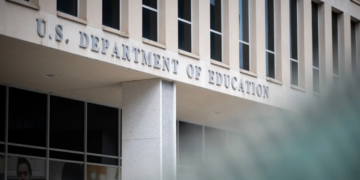Dec 1, 2024 Story by: Editor
The 1954 Supreme Court ruling in Brown v. Board of Education, a cornerstone of the Civil Rights Movement, mandated the desegregation of schools nationwide, aiming to provide equal opportunities and resources for all students. However, seven decades later, a study by the Southern Education Fund reveals that segregation in schools persists—and, in some cases, is worsening.
The report, titled Miles to Go, highlights key issues such as funding inequities, entrenched segregation patterns, and disciplinary policies disproportionately affecting Black students.
Raymond Pierce, President and CEO of the Southern Education Fund, acknowledged that these challenges are far from new.
“Many of the symptoms and the disparities in this report are disparities and concerns that have been expressed over the decades with regard to the education available for African-American students in this case, particularly in the state of Mississippi. So a lot of this is not new,” Pierce stated.
Pierce noted some progress in the past, particularly during the desegregation era.
“There have been some improvements over the decades. There have been times when this nation, Mississippi included, has been on the climb up in terms of addressing these disparities, and there have been times when the nation has been very serious, particularly during the era of desegregation, where there has been closing of the gap and some reduction of these disparities. But we find that, as this report points out, we’ve kind of slid back,” he said.
The report, which examines data on Black students from early childhood to postsecondary education, reveals that disparities often manifest in academic outcomes, including graduation rates and test scores. However, Pierce emphasized that these issues stem from deeper opportunity gaps, primarily driven by funding inequities.
Nationwide, schools with high percentages of Black or minority students receive, on average, 13% less funding than predominantly White school districts. Pierce advocates for targeted solutions like Title I funding to address these inequities.
“Before we start talking about funding formulas as part of this, we have to talk about what it is we’re funding. Is it more teachers or teacher aids? Is it more education technology tools? Smaller class sizes? Is it more personalized funding?” Pierce explained.
“It’s not just throwing money at the problem until it’s fixed, or not. It’s addressing the formulas we currently use and identifying those school districts that are lagging behind, and targeting those schools with specific funding that can actually address those disparities.”
As of May 2024, the U.S. Justice Department’s Civil Rights Division reported that approximately 30 school districts in Mississippi remain under active federal desegregation orders, underscoring the ongoing struggle for educational equity. Source: mpb online

















